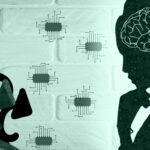
Practical Applications for Cognitive Strategies in the College Classroom
While there has been considerable interest in cognitive science in education, limited numbers of educators are using this information to inform teaching and learning. That’s

While there has been considerable interest in cognitive science in education, limited numbers of educators are using this information to inform teaching and learning. That’s

earning is a dynamic, complex, and nonlinear process, and graphic organizers can help support this across a wide variety of learners and disciplines. “A graphic

Magna Publications © 2024 All rights reserved